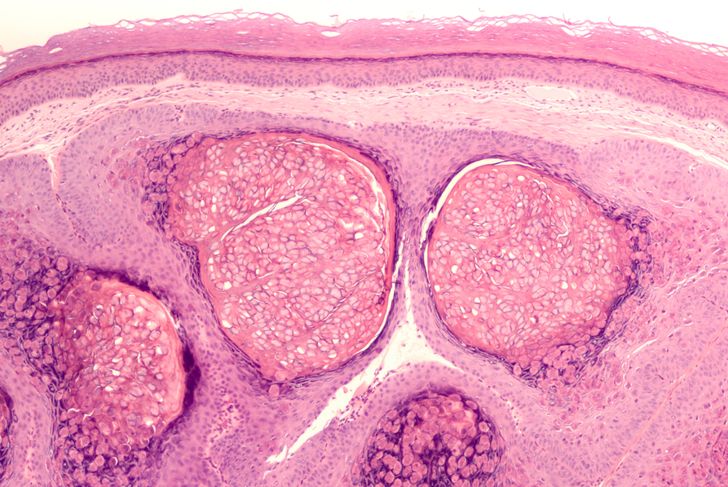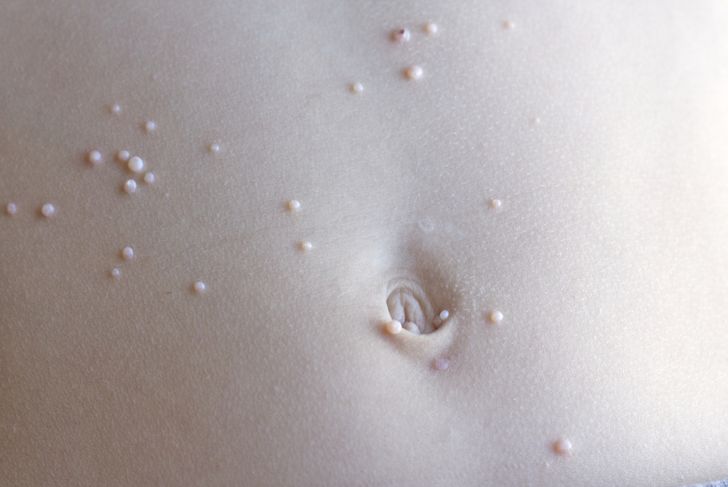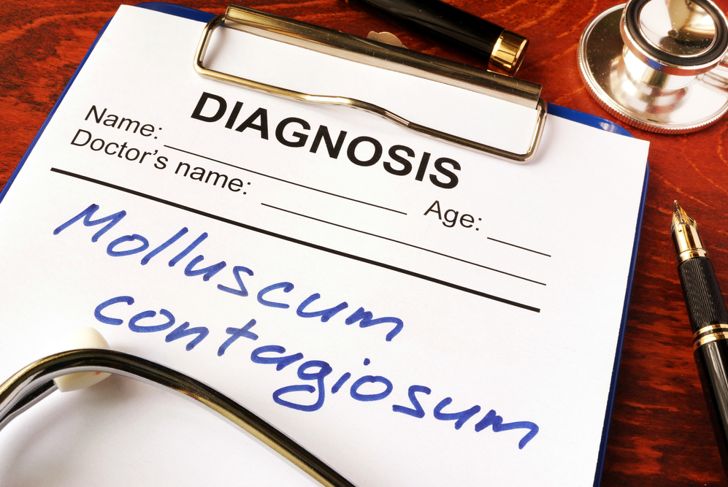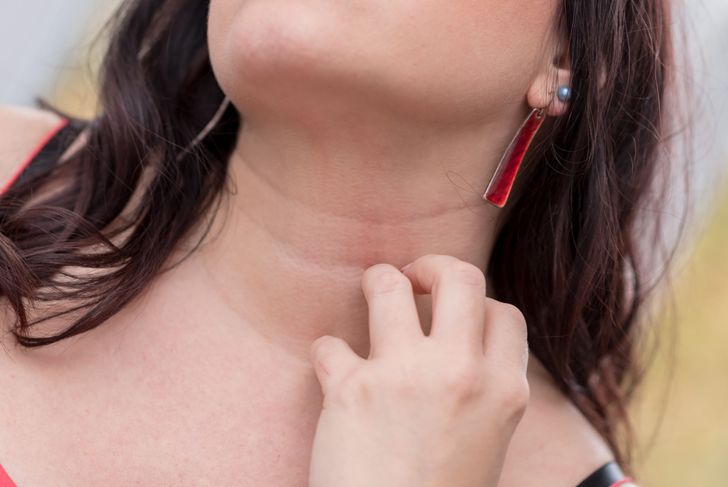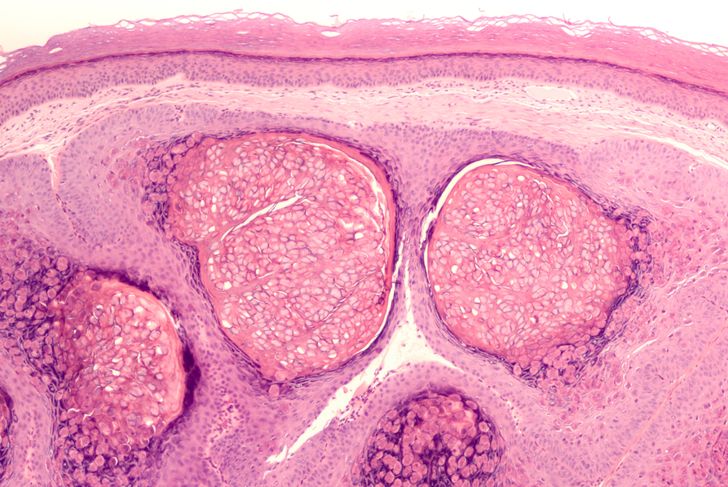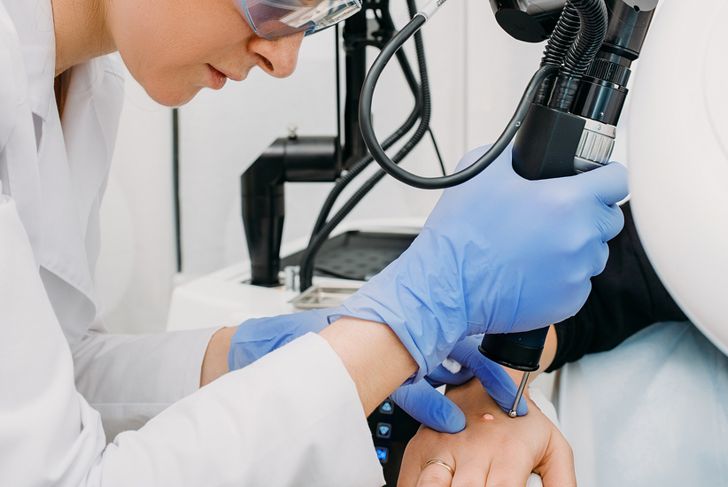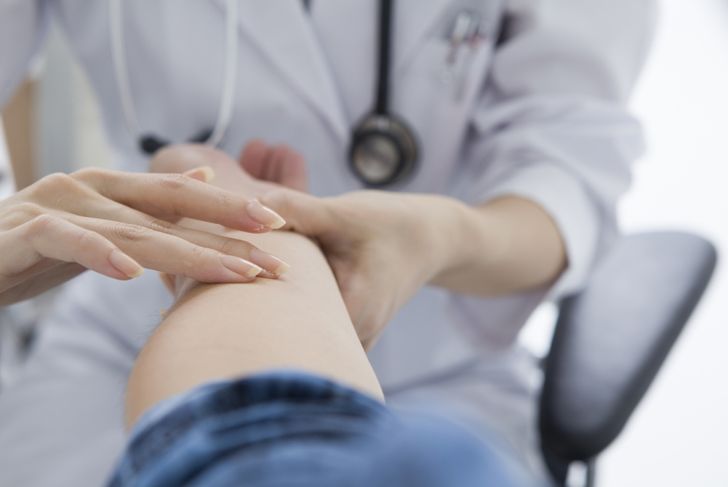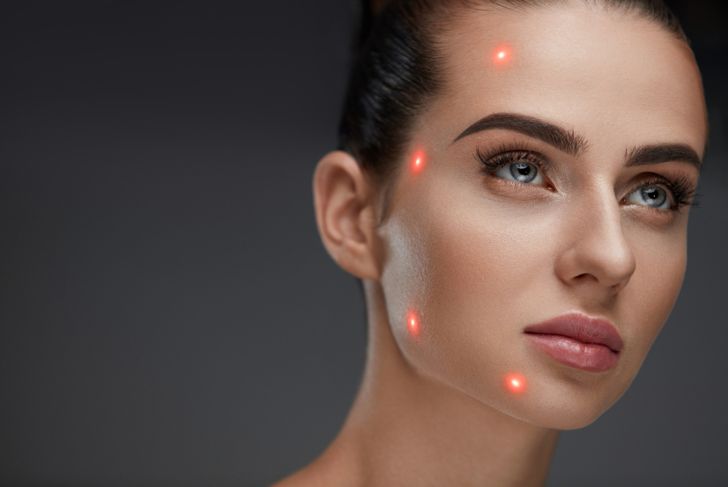Molluscum contagiosum is a chronic skin infection that can last for months to years, though most cases resolve within nine months. The infection is caused by a virus and can be
Causes
A virus of the same name causes molluscum contagiosum. It belongs to the same family as the chicken pox virus. It is more common for children to develop the skin infection. However, people of all ages, genders, and lifestyles can contract the molluscum contagiosum virus. It is contagious, as the name suggests.
Causes (Continued)
This skin infection can be spread by touching something infected with the virus. For example, if you touch a towel, shower mat, clothes, or toys that are contaminated then you can also contract the virus. Besides touch an infected surface or object, skin-to-skin contact also spreads the infection. Participating in sports such as wrestling might increase your risk of molluscum contagiosum. Sexual contact with an infected person will also spread the skin ailment. You can spread the infection across your own body by scratching and rubbing the skin.
Symptom: Bumps
The face, neck, armpits, limbs, or trunk are common areas of children to have bumps whereas adults might have it there as well as on the abdomen, inner thighs, or genitals. The bumps, also known as papules, are generally small and range from two to five millimeters in diameter. They are pink or flesh-colored with a smooth surface. The firm, dome-shaped bump may resemble a pearl. The bumps may be the only symptom of molluscum contagiosum. They appear within about seven weeks after being exposed to the virus, but in some cases, it may take even longer. In most cases, about 10 to 20 papules appear on the skin, but if you have a weakened immune system, then you can develop hundreds of bumps in one spot alone. If you can see bumps, then the virus is contagious.
Symptom: A Dimpled Center
With molluscum contagiosum, the papules are not just small, pink bumps. They tend to have a dimple in the center of the bump. The central core is full of a waxy material that is thick and white; it may resemble a cheesy-like substance. Because of the size of the bumps, you may not notice this sign of molluscum contagiosum.
Symptom: Itchy
Luckily, molluscum contagiosum is not painful. However, the bumps can get itchy. You should avoid wearing clothing that can rub against the skin infection and cause more irritation. Scratching or picking the bumps will spread the virus to other locations of your body so try to prevent touching the infection whatsoever. You can also spread the molluscum contagiosum virus if you continue to touch your skin and then other surfaces or objects.
Symptom: Soft and Red Overtime
Since molluscum contagiosum affects your skin for at least six months, you might notice a change in the bumps over time. As your immune system tries to fight off the virus, the bumps may change from pink or flesh-colored to red. The papules can become softer to the touch as well. The center dimple might also begin to drain after several months.
Treatment: No Medical Attention
Even though it can take nearly a year or more for molluscum contagiosum to clear, you may not need medical treatment. If you have a normal immune system, then the virus may disappear on its own over a period of time. For children, unwanted side effects may not be worth the risk of treatment, so giving the skin infection time to heal is necessary. You and your doctor or a dermatologist can determine what treatment plan, if any, is appropriate for your condition.
Treatment: Cryosurgery
Although the suffix includes the word ‘surgery’ this treatment for molluscum contagiosum can be performed in a dermatologist’s office. Using liquid nitrogen, the bumps we become froze and easily removed from your skin. This can stop the virus from spreading to other parts of your body or other people. If you have a weakened immune system, cryosurgery may help control the infection.
Treatment: Topical Therapy
You can destroy molluscum contagiosum by applying various blistering solutions or acids to the infection. They work by removing the top layer of skin. Your dermatologist will perform the therapy during an office visit. If you have a weak immune system, your doctor may recommend trichloroacetic acid to get rid of the bumps. Large or multiple bumps may require topical therapy every three to six weeks until the condition subsides. New bumps might appear as the others fade, which is normal. The process is not painful per say, but it can cause discomfort.
Other Treatments
There are several other ways to treat the molluscum contagiosum virus. Your dermatologist might perform curettage, which involves a small tool scraping the bumps. Laser surgery is another option that targets and destroys the bumps and might benefit people with weakened immune systems. An antiviral prescription or retinoid medication may help get rid of the virus and can be taken at home as directed.

 Home
Home Health
Health Diet & Nutrition
Diet & Nutrition Living Well
Living Well More
More